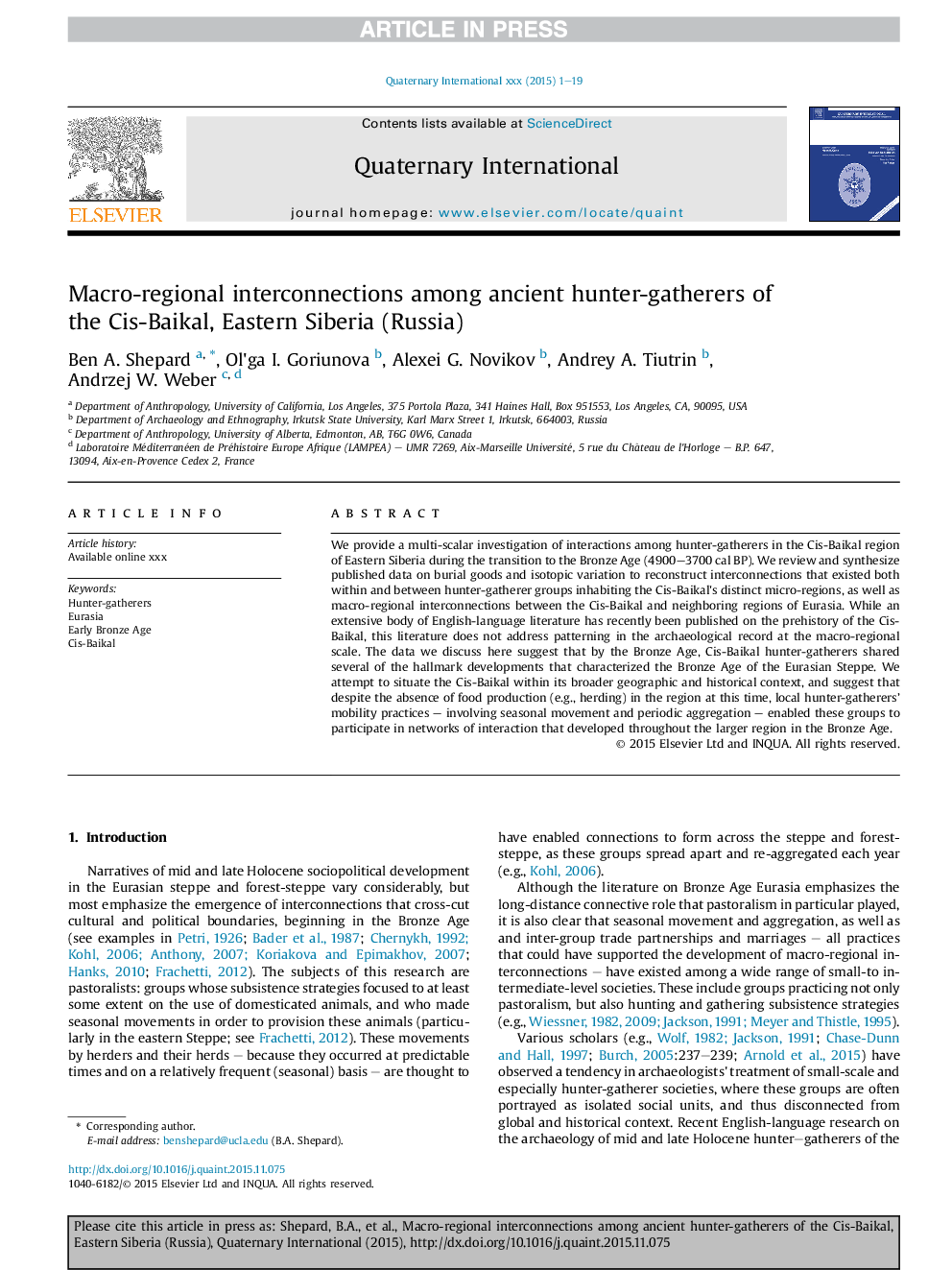| Article ID | Journal | Published Year | Pages | File Type |
|---|---|---|---|---|
| 5114092 | Quaternary International | 2016 | 19 Pages |
Abstract
We provide a multi-scalar investigation of interactions among hunter-gatherers in the Cis-Baikal region of Eastern Siberia during the transition to the Bronze Age (4900-3700Â cal BP). We review and synthesize published data on burial goods and isotopic variation to reconstruct interconnections that existed both within and between hunter-gatherer groups inhabiting the Cis-Baikal's distinct micro-regions, as well as macro-regional interconnections between the Cis-Baikal and neighboring regions of Eurasia. While an extensive body of English-language literature has recently been published on the prehistory of the Cis-Baikal, this literature does not address patterning in the archaeological record at the macro-regional scale. The data we discuss here suggest that by the Bronze Age, Cis-Baikal hunter-gatherers shared several of the hallmark developments that characterized the Bronze Age of the Eurasian Steppe. We attempt to situate the Cis-Baikal within its broader geographic and historical context, and suggest that despite the absence of food production (e.g., herding) in the region at this time, local hunter-gatherers' mobility practices - involving seasonal movement and periodic aggregation - enabled these groups to participate in networks of interaction that developed throughout the larger region in the Bronze Age.
Related Topics
Physical Sciences and Engineering
Earth and Planetary Sciences
Geology
Authors
Ben A. Shepard, Ol'ga I. Goriunova, Alexei G. Novikov, Andrey A. Tiutrin, Andrzej W. Weber,
